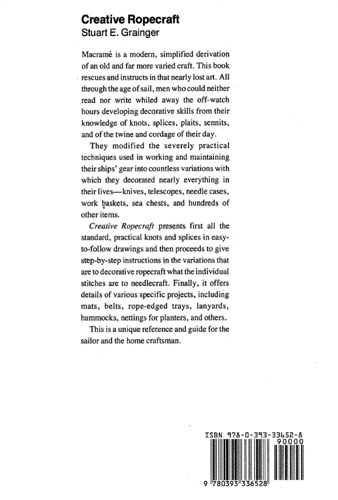Creative Ropecraft/Креативное веревочное ремесло
Издание на английском языке
During the Napoleonic wars British ships sailed to and fro for months on end, patrolling the same stretch of water on blockade duty, yet the hundreds of men on board had no television, no radio, no records and no magazines. There would have been a few simple musical instruments, but, for the vast majority, the only materials available to occupy their hands and minds in recreation were the discarded cordage and canvas from the ship’s rigging and sails. This book is an introduction to the practical folk art which developed at sea in sailing ships, among the simplest and poorest of men, whose only skill, apart from that of personal survival, lay in their hands and the use of shipboard materials. Few of these men could write or read, yet they often spent years in cramped quarters aboard the same ship and, although frequently overworked, they also had to pass long periods of enforced inactivity, becalmed or at anchor, awaiting a berth or a favourable wind.
Contents
Introduction
1 Cordage characteristics - standard knots
2 Bindings, multi-strand knots and splices
3 Single strand fancy knots
4 Plaits and sennits of up to six strands
5 Multi-strand combination knots
6 Covering and netting
7 Ropecraft design
8 Practical projects
Conclusion and bibliography
Index




